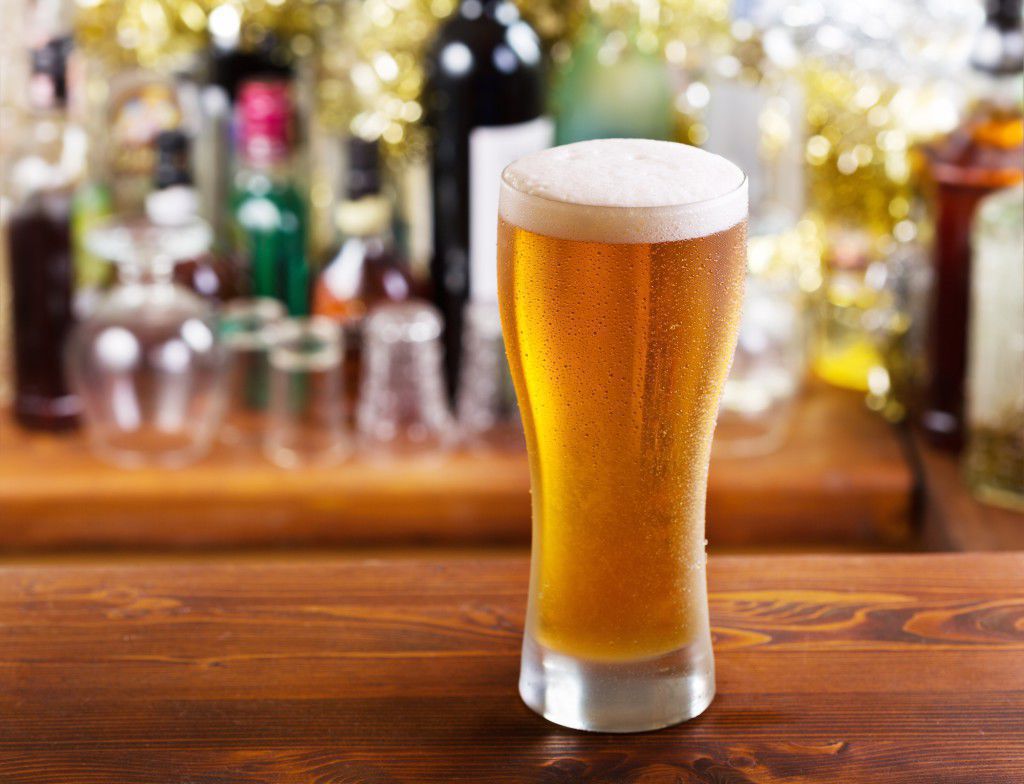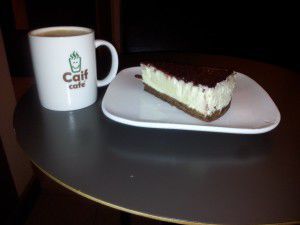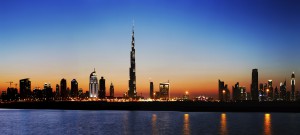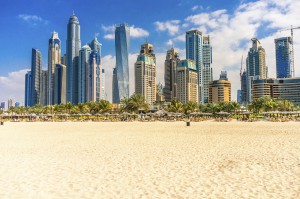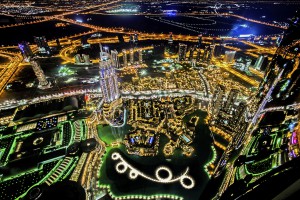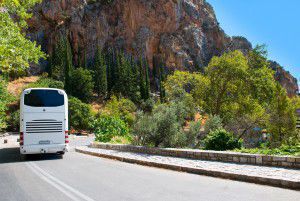Top 10 tips for learning a language
We originally published this infographic back at the start of last year as ‘top 10 tips for learning a language in 2014‘. But if there’s one thing we know, it’s that learning a language is something you can do anytime, anywhere.
So here are our top 10 tips for learning a language – whenever you want!
If anyone has any more top tips that work really well for you, please share them in the comments. Thank you 🙂
The language of beer
‘Two beers, please’ is perhaps one of the most useful phrases you can learn at the start of your language-learning journey (and, incidentally, one of the first items you learn with uTalk Essentials). You’ve made it to the country, you’ve struggled with buses from the airport and fought with taxi drivers over the fare. Now you’ve dumped your luggage and definitely deserve a nice, cool, refreshing beer, so into the pub you go.
There’s just one problem.
If you go into a pub in the UK and ask for a beer, there will be a follow-up question: Is that ale or lager?
The correct answer, by the way, is always ale. Ale, ale, ale, especially if you want to discover a little bit of Northern European culture. We do have lagers here too, of course, but ale is the more traditional drink, available in an enormous range of tastes and colours, served in short, squat pints (or tankards, if you’re lucky), as opposed to the tall spindly glasses that lager generally comes in.
But what is the difference, and why do you need to know about it?
Well, they’re two very different drinks. Very different! Lager is fizzy, cold and has a light flavour, whereas ale is flat and heavy (in fact, in Aberdeenshire, instead of ordering a pint of ale you order a pint of ‘heavy’) and definitely not as cold as lager. Ale drinkers rarely switch to lager and vice versa.
Why choose ale?
The great thing about ale is that there are thousands and thousands of different types, and any good pub will have at least four different ones on tap at any time (if they have fewer than that, just walk out and go somewhere else). You can usually ask to try one before committing to a full pint, as tastes can vary rather wildly in ale, from super-hoppy bitter numbers (again, ‘a pint of bitter’ will get you a pint of ale, if you want to experiment with English colloquialisms), to sweet, chocolatey types and light, refreshing ‘session’ ales. Depending on the region (and Kent, Norfolk and Cornwall are but three UK regions with a strong ale tradition), you might start to spot certain recognisable tendencies, or again you might find a brewery you like and be forever wedded to their creations. For me, anything by Skinners or Sharp’s wins hands-down over anything else on offer.
Still confused? We found this handy infographic by popchartlab that breaks it all down…
Got any thoughts on the different types of beer available in different countries? Do you have a preference for ale or lager? Let us know!
Nat
A trip to Riga
At the risk of sounding like a Eurovision host… greetings from Latvia!
I don’t have the sparkly outfit or the slightly dodgy English accent (although some may disagree with that), nor am I looking for my five minutes of fame. So perhaps less Eurovision host, more lazy wanderer.
 I find myself in the beautiful city of Riga for a few weeks, and after only a few days, I can say it is a good choice with lots to explore.
I find myself in the beautiful city of Riga for a few weeks, and after only a few days, I can say it is a good choice with lots to explore.
Riga has become a ‘must see’ for many a traveller, a mid-point on the popular route between Tallinn and Vilnius.
The time difference is +2 GMT and it’s a little surprising to find the sun rising at 3 in the morning when the evenings draw in much the same time as they do in the UK.
The temperature is actually like the best bits of the UK summer and sometimes hotter, but that can be significantly reduced by the wind.
The currency is the euro, the prices are relatively cheap, the local supermarket is Rimi.
Everything is pretty central and the airport is accessible by little more than half an hour by bus for around 2 euros.
So, that’s the stats and stuff.
So what’s Riga really like?
Well, if you’ve been to Budapest, it’s quite similar. A lot of the cities over this way are like that: where communism still flavours the architecture yet the need for growth and change is evident in the modern buildings that have sprung up amongst them.
The main thing you’ll realise about Riga on arrival is the parks. Everywhere you look there are beautiful parks, with statues, floral sculptures, sailing boats, cafes, and sometimes a ‘summer stage’ where I’m told there are free performances. If you’re a park-bencher – book, beer, cake, coffee – this place is beyond perfect. You could probably do a full tour of all the benches and be here for months!
It’s a ‘shoes off’ culture so be prepared to bare feet the moment you arrive in a hostel or home. Also be prepared for the supermarkets to stop selling alcohol around 7:30. Stock up, early!
The traffic lights can be very quick changing so do not dawdle. You’ll be alerted by a series of beeps. When the beeper beeps, get going!
There is a great central market and if you go inside there are a lot of stalls selling local fare. Prepare to put on weight. It is pastry-central here. I haven’t tried savoury Latvian food yet, but that day will come.
Whilst English is not spoken everywhere, the locals are used to the poorly multi-tongued English speaker, and are patient and on the whole very kind.
It’s too soon to tell but I imagine a week would be an adequate length of time to see everything there is to see of Riga. But, since I’ll be here for a while yet, perhaps I can provide a little more detail on that in the near future.
But until then, and until I sample the local beer… Priekā! (cheers)
Kelly
10 reasons to visit… Dubai
Dubai, in the United Arab Emirates, is known for being a global business hub and home to some of the world’s most incredible buildings. Amy visited the city over the Easter holiday and loved it; here are her top ten reasons to visit…
1. Burj Khalifa
The tallest building in the world – at least for another few months, anyway – is a sight you definitely won’t be able to miss. Designed to look like the Hymenocallis flower, it is beautiful from the outside and surprisingly not out of place or invasive to its surroundings. If you’re able to go up to the viewing platforms, I would recommend going at sunset because the view is spectacular, and to be able to view Dubai from such a height is really special. However, if you aren’t able to go up the Khalifa, you have to go to the fountains at the bottom, where you can see them dancing to different types of music.
2. The Dubai Mall
The Dubai Mall is the world’s largest shopping, leisure and entertainment destination. Anything and everything you can think of is there; it’s where the locals go to shop and even people from Abu Dhabi come at the weekend. They have a waterfall with bronze statues diving from the waterfall – this is where I found it rather peaceful and zoned out of the crowds behind me. It is definitely somewhere to go and have a look around, especially as it is attached to the Khalifa, but be prepared for the crowds.
3. The architecture
Dubai has grown considerably in the last 25 years. You can find pictures of Dubai in 1991, when there were only a handful of tall buildings, compared to now where it has become an architectural paradise. My personal favourite was the Cayan Tower, as it seemed to constantly glisten in the sun from every angle. I have also never seen a twisted building before.
4. Atlantis
This hotel on the man-made island Palm Jumeirah is simply incredible; it’s huge, and there are so many things that you can do. There is the aquarium, water park, swimming with dolphins and now swimming with sea lions. We had a lovely day here; firstly swimming with dolphins, and the look on my little brothers’ and sister’s face when they got to stroke the dolphins was magical. Then we went to the water park where they have awesome rides. It is definitely worth spending a day here.
5. The beaches
The beaches on the Palm felt a little too fake to me. However, the beaches off the Palm were beautiful. The sea was crystal clear, so you could see where you were walking, and rock-free so you didn’t have to worry about stubbing your toe. We got to see the sea when it was perfectly still, which was lovely for swimming in. Then we got to see it when the waves were huge; this was great fun to jump the waves. You felt safe the whole time, as there were lifeguards in kayaks out at sea as well as several on the beach.
6. The weather
We were in Dubai for eight days and the weather was glorious the whole time; if anything it became too hot on one day, when it reached 42°C. There aren’t many places where you can escape to at Easter for a week and be guaranteed good weather the whole time you are there, but Dubai is definitely a safe bet.
7. Sky Dive Dubai
I think it is on quite a lot of people’s bucket list to do a sky dive, and I finally gained the courage to sign up to do one. The experience is one that is tricky to put into words, as you going through several different stages. In the plane there are nerves, but they’re very good at keeping you talking so you don’t notice how high you are. Next, walking up to the door I felt complete terror and it finally sunk in that I was about to jump out of a plane!!! Then just pure adrenaline throughout the free fall; this was definitely my favourite stage. Once the parachute releases, there’s relief at first and then you get to enjoy Dubai from the sky, admiring the view from different angles. Once the landing is over, there is the ‘thank goodness I made it down safely’ feeling, followed by ‘I want to do it all over again’!
8. Hotel Al Qasr
We had a little disaster with our first hotel; however when we moved to our second hotel the Al Qasr, I have never seen anything like it. It’s an oasis in paradise. You have to get boats to different parts of the hotel, which is a great experience and a good way to see different parts of the hotel. There’s even a traditional souk, where you can go and practise your haggling skills.
9. The unexpected
Wherever you go in Dubai you never really know what you are going to get, which makes it all the more exciting. You never know if you are going to find something modern or something more traditional; around each corner lies something different. That is one of the things I love about Dubai, the architecture and landscape varies so dramatically. I can’t wait to go back and explore even more.
10. Desert Adventures
This is a great excursion to do; I admit it’s a little cheesy but it’s great fun, and definitely an experience you won’t forget. You get picked up in a big 4×4 and before long you have left the concrete jungle and are into the desert. You skid down sand dunes and attempt to get back up them; I have full respect for the drivers as I have no idea how we didn’t end up rolling down the dunes. Next you get to watch the sunset over the desert, which is stunning, followed by dinner in the desert at a makeshift fort. You are serenaded by belly dancers and can enjoy a camel ride.
Have you ever been to Dubai? What are you favourites bits about this diverse city?
Amy
The Long And Winding Road… of Long Distance Bus Travel
If you’re on a budget or just want to indulge in a bit of thinking time, travelling across Europe by bus could be the thing for you. With numerous companies offering fantastic prices, it’s a wonder that more people haven’t partaken in this not-so-secret method of transport.
Based on two particular routes*, here are some ‘dos and don’ts’ from our own personal experience.
Checking In
If you are travelling from the UK, Victoria Coach Station insist on you being available to check in at least one hour before departure. From other countries it is usually around half an hour maximum.
Check in normally involves only showing your ticket or reference number, however in some places there will also be an additional check of your ID card or passport.
If you want to guarantee a window seat or that your luggage is on first, face the fact that you will have to queue. Embrace it. Or at least prepare some good music to dance to whilst waiting.
Luggage
Whilst coach companies are very generous and often overlook oversized luggage, don’t get too greedy. Luggage limits are usually around 25kg and it’s mostly okay to go over that – although not with your entire house. On a very recent trip one single traveller was furious that her guitar, record player, large holdall, large backpack, and two very large suitcases were deemed too much. Shocking.
On The Bus
Thankfully coach seats do not recline as much as plane seats might, but there will always be someone who believes they alone need all the body space and legroom that is/isn’t available.
Mind where you sit. If you’re someone who needs the toilet regularly then you have to weigh up the pros of being close to the toilet with the cons of constantly hearing the door slam and the toilet flush – amongst other things.
Also. Take tissue with you. The one solitary toilet roll that is often installed in coach toilets pretty quickly disappears, so if you need to use the facilities more than two hours into the journey, take your own supply.
Trips to the toilet in the middle of the night can either be a human assault course or a foot fetishist’s idea of heaven: those lucky enough to not have to share a seat will sprawl out as best they can, with feet both socked and bare blocking your way. Do what you will.
Take headphones or earplugs. You are guaranteed to have either one token unhappy child or one potentially unstable adult who feels the need to tell everyone their life story. Look busy. At all times.
A small blanket is a very good idea for the coach, no matter the season you travel in. There’s nothing worse than attempting to sleep as a contortionist might, when there’s a breeze coming in on your back or you are shivering.
If you board a bus that originates from the UK, and you happen to have a UK adapter/plug, guard it with your life. For once other unprepared passengers are aware of this little treasure, everyone will suddenly want to befriend you and ‘borrow’ it.
Regular Stops
When there is a stop, use the toilet. Whether you feel the urge or not. If nothing else it is an opportunity to wash your hands thoroughly as the sinks in coach toilets always seem to have the smallest trickle of water and very little soap.
Take plenty of change with you for the vending machines at service stations. Not only will this work out cheaper than buying a ‘proper’ coffee at every stop, you will also be pleasantly surprised by the range and quality of hot beverages available. Especially in France. May we recommend the vanilla cappuccino.
Crossing The Channel
Depending on the time of day, you will either face the claustrophobic challenge that is the Channel Tunnel, or walk around a ferry at your leisure for around an hour before trying to find your coach again at the last minute. The ferry feels much more civilised as you can lounge on sofas or pace up and down the deck, but the Tunnel is much faster.
Be prepared for long delays at the border. It can either take under half an hour to go through the two separate controls for France and England, or it can take two hours. It depends on if they feel like checking your luggage as well as your passports, if they want their sniffer dogs to check you over, and if your fellow passengers who need visas have filled in or need help with filling in their paperwork.
Pet Peeves And Pluses
The main pet peeve of long distance coach travel, it has to be said, are Those People. You know the ones. Those who feel that every single stop, be it to refuel or for the driver to change, is their own personal cigarette break. Those that when the driver says there is a 45 minute break, decide to casually stroll into the service station five minutes before departure and delay the coach with their hot drinks that the driver has clearly said are not allowed onboard. Those that are veterans of the journey and will not leave the driver alone for a moment, or will give the entire coach a loud, running commentary the entire route.
A big plus is the long stops when changing buses. Stopping in Paris for 3 hours gives you ample time to wander to the Eiffel Tower and Arc de Triomphe as well as popping into a patisserie for a cheeky pastry for your petit dejeuner.
It does have to be said though, at least in our experience, that the drivers make the journey. They are jolly, they tell bad jokes, and they cheer you on with gusto to encourage you to get through the border control quicker than their previous coach passengers. Definitely an added bonus that will make you smile.
Bus travel. It isn’t for everyone. But perhaps it is for you.
Kelly
One more plus from us: you’ll meet loads of interesting people on your bus journey. Why not download uTalk for iOS, so you’ll always know how to say hello, even if you’re from different countries?
*Budapest to London, via Eurolines, with a travel time of 26 hours and 45 minutes. Calling at: Győr, Vienna, Linz, Liege, Brussels, Ghent, Lille and Dover before terminating at Victoria Coach Station, London.
Barcelona to London, via Megabus, travelling for approximately 26 hours. Calling at: Toulouse, Brive, Paris and Amiens and terminating at Victoria Coach Station.

